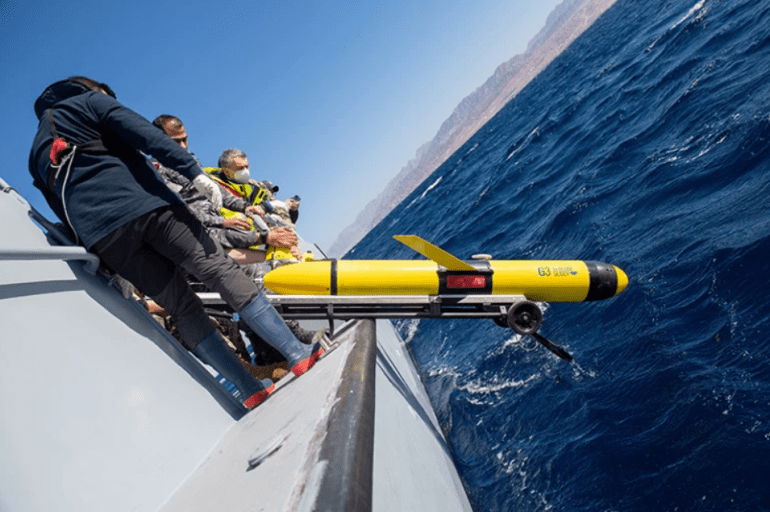- NATO, celebrating 75 years, emphasizes science’s pivotal role in addressing evolving global security challenges.
- The organization’s scientific focus spans defense and civil-security initiatives, leveraging AI and climate research.
- NATO’s Science and Technology Organization (STO) spearheads collaborative R&D projects with over 6,000 scientists.
- The Centre for Maritime Research and Experimentation (CMRE) pioneers maritime technologies, led by Eric Pouliquen.
- The Science for Peace and Security (SPS) program funds research in counterterrorism, cyber defense, and climate change’s impact on security.
- NATO explores AI’s role in enhancing soldiers’ capabilities and investigates biotechnology’s potential to boost human performance.
- The alliance increasingly prioritizes climate research, monitoring melting sea ice and assessing military infrastructure’s resilience.
- NATO’s expanding membership, including recent additions like Finland and Sweden, augments scientific collaboration prospects.
- Diplomatic efforts through science, exemplified by the Science for Peace and Security program, face challenges amid geopolitical tensions.
- Paul Arthur Berkman advocates for the indispensable role of scientific dialogue in addressing global challenges.
Main AI News:
In the realm of global defense, scientific advancements are pivotal. NATO, celebrating its 75th anniversary this month, stands as a testament to this axiom. Established as a political and military alliance, NATO now spans 32 countries, continually evolving to address emerging geopolitical and military challenges. At the heart of NATO’s endeavors lies its robust scientific apparatus, focusing on defense and civil-security initiatives. These include probing the ramifications of climate change on warfare, leveraging emerging technologies to bolster soldiers’ capabilities, and combating discrimination within military ranks. Simona Soare, a defense technologies expert at Lancaster University, forecasts a substantial surge in NATO’s reliance on science and technology in the coming decades.
Bryan Wells, NATO’s chief scientist, elucidates the organization’s strategic approach: “We’re committed to furnishing scientific counsel to NATO nations, ensuring they maintain a competitive edge in technology and military affairs.” Operating from its headquarters in Brussels, NATO orchestrates a multifaceted network comprising both civilian and military personnel. This intricate structure channels resources into research and development (R&D) endeavors, predominantly facilitated by the Science and Technology Organization (STO). With over 6,000 scientists hailing from academia, national laboratories, and industry, the STO spearheads collaborative defense projects. Annually, contributions from NATO members and non-member nations total approximately €350 million (US$380 million) to sustain this scientific network.
Central to NATO’s scientific portfolio is the Centre for Maritime Research and Experimentation (CMRE) in La Spezia, Italy. Led by Eric Pouliquen, this research hub pioneers advancements in maritime technologies, leveraging the expertise of 150 personnel. Moreover, NATO’s civilian arm allocates grants through the Science for Peace and Security (SPS) program, overseen by Claudio Palestini. This initiative funds research endeavors spanning counterterrorism, cyber defense, and the burgeoning intersection of climate change and AI’s impact on security.
While NATO endeavors to uphold transparency by publishing research findings in peer-reviewed journals, a considerable portion of its projects remains classified. Despite this, NATO maintains a commitment to open collaboration, driving innovation and resilience in the face of evolving threats.
In its quest for technological supremacy, NATO explores diverse research domains. Projects encompass autonomous undersea surveillance, quantum radar, and synthetic biology. Noteworthy efforts include leveraging AI to enhance soldiers’ concealment capabilities and delving into biotechnology’s potential to augment human performance. These initiatives underscore NATO’s proactive stance in embracing cutting-edge technologies to safeguard global security.
In recent years, NATO has increasingly turned its attention to the intersection of climate change and security. Recognizing the profound implications of environmental shifts, NATO’s scientific endeavors extend to monitoring melting sea ice in the Arctic and assessing the vulnerability of military installations to extreme weather events. By spearheading initiatives to map greenhouse-gas emissions and study the adaptability of military infrastructure, NATO underscores its commitment to addressing climate-related security challenges.
NATO’s Expansion: Catalyst for Scientific Collaboration
As NATO’s membership swells, driven by recent additions like Finland and Sweden, the alliance’s scientific footprint expands commensurately. With aspirations for further enlargement, including prospective members like Bosnia and Herzegovina, Georgia, and Ukraine, NATO stands poised to harness an even broader pool of scientific expertise. Notably, pre-accession collaboration with Finland and Sweden exemplifies NATO’s commitment to fostering scientific cooperation, laying the groundwork for enhanced R&D synergy upon accession.
Navigating Diplomacy through Science
Throughout its history, NATO has recognized the pivotal role of science in fostering diplomatic dialogue. Initiatives such as the Science for Peace and Security program have served as conduits for international collaboration, fostering engagement even amidst geopolitical tensions. However, recent geopolitical rifts, notably exemplified by NATO’s suspension of scientific cooperation with Russia in 2014, underscore the fragility of such diplomatic endeavors. Paul Arthur Berkman, a prominent advocate for science diplomacy, warns against the erosion of scientific dialogue, emphasizing its indispensable role in addressing global challenges.
As NATO charts its course forward, the convergence of science, diplomacy, and security remains paramount. Embracing scientific innovation while navigating geopolitical complexities, NATO continues to adapt, safeguarding peace and security in an ever-evolving world.
Conclusion:
NATO’s strategic emphasis on scientific advancements underscores its commitment to staying ahead of evolving security threats. This focus not only enhances NATO’s defense capabilities but also presents opportunities for industries involved in AI, biotechnology, and climate research to collaborate with the alliance. Moreover, as NATO expands its membership and navigates diplomatic complexities, businesses should remain vigilant of geopolitical shifts that may impact international scientific cooperation and market dynamics.

